Top 10 Basic Tricks for Training Your Purebred Kitten
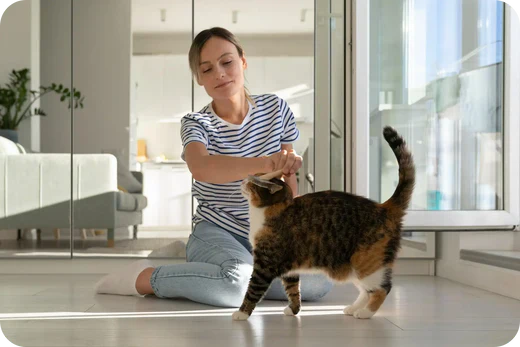
The Importance of Training Your Cat
Training your cat is essential for their safety, mental well-being, and strengthening your bond. It teaches them necessary behaviors for cohabitating safely and harmoniously with humans, while also providing mental stimulation that curbs negative behaviors. Regular training enhances communication, allowing you to understand each other better and build a trusting relationship. Check out our "Ultimate Purebred Kitten Training Guide: Mastering Behavior & Obedience" to know more about cat and kitten training.
The Importance of Understanding Your Cat's Sounds and Body Language in Cat Training
Understanding your cat’s vocalizations and body language deepens your bond by accurately interpreting their needs and emotions. With the help of the article "Decoding Meows and More: Understanding Your Purebred Kitten's Behavior", learning your cats message is easier. Recognizing these cues helps you respond appropriately, ensuring your cat feels heard and supported. This knowledge prevents stress and behavioral problems, promoting a happy, healthy cat.
The Importance of Preparing Your Home for a Well-Behaved Cat
Preparing your home for your cat is key to preventing accidents and unwanted behaviors. Creating a cat-friendly environment with safe spaces, scratching posts, and toys encourages natural, positive behaviors. Cat-proofing by removing hazards ensures their safety, making your home a conducive space for their happiness and well-being. Be sure to read on the "Ultimate Guide to Preparing Your Home for a New Purebred Kitten" for well prepared environment for you furr-friends.
Top 10 Basic Tricks for Your Purebred Kittens
Bringing a purebred kitten into your home is an exciting experience filled with joy and the anticipation of making lasting memories. Training your kitten to perform basic tricks not only strengthens your bond but also stimulates their intellect and satisfies their curiosity. Here’s a guide to teaching your purebred kitten the top 10 basic tricks.
1. Come When Called
- Description: Training your kitten to respond to their name or a specific call enhances their safety, ensuring they can be recalled in potentially dangerous situations. It's a fundamental aspect of their training that fosters trust and responsiveness.
- Training Steps: Begin in a distraction-free area to capture your kitten's full attention. Consistently use their name or a distinct sound like a clicker, then immediately follow with a favorite treat or affection as a reward. Repeat this process, gradually introducing more distractions and increasing the distance between you and your kitten to solidify their recall response.
- Breed Example: Maine Coons showcase their dog-like loyalty and intelligence by excelling in coming when called, often eagerly approaching with a tail held high.
2. Sit
- Description: The 'sit' command is a cornerstone of basic obedience training, teaching your kitten to adopt a calm and stationary posture on command. It's useful for managing their behavior and serves as a building block for more complex commands.
- Training Steps: With a treat in hand, catch your kitten’s attention, then slowly raise the treat above and slightly behind their head, prompting them to look up and back, naturally lowering into a sit position. As their bottom touches the ground, clearly say "sit," rewarding them immediately. Practice in short, positive sessions to reinforce this behavior.
- Breed Example: Devon Rex cats, with their sharp intellect and eagerness to engage, quickly grasp the concept of sitting on command, showing a keen ability to learn and please.
3. High Five
- Description: A 'high five' is a delightful interactive trick that strengthens your bond with your kitten by encouraging them to touch your hand with their paw on command. It’s a fun way to engage their coordination and sociability.
- Training Steps: Initiate this trick with your kitten in a sitting position. Hold a treat in the hand you won’t use for the high five and gently tap one of their front paws while saying “high five.” Most kittens will instinctively lift their paw. Move your other hand to meet their paw in a high-five motion and immediately reward them. Over time, your kitten will initiate the high five without the need for a tap.
- Breed Example: Sphynx cats, known for their affectionate and interactive nature, relish in the tactile engagement of giving high fives, often using it as a way to seek attention and treats.
4. Stay
- Description: Teaching your kitten to 'stay' helps control their movement, especially in potentially unsafe situations. It instills discipline and patience, ensuring they remain calm and stationary until released.
- Training Steps: After your kitten has learned to sit, introduce the stay command. Hold your palm up as a visual cue and say “stay” in a firm, calm tone. Take a step back. If they stay, even for a few seconds, return and reward them. Gradually increase the duration and distance, rewarding patience and compliance.
- Breed Example: Ragdolls, with their naturally calm and docile demeanor, excel at the stay command, often content to lounge in place, observing their surroundings with gentle interest.
5. Fetch
- Description: Fetch is a stimulating game that mimics hunting behavior, encouraging your kitten to chase, capture, and return a toy. It’s an excellent way for them to exercise and bond with you.
- Training Steps: Choose a lightweight toy that your kitten shows interest in. Toss it a short distance away. Encourage them to chase it. When they grab the toy, call them back with excitement. If they return with the toy, offer lavish praise and a treat. If they drop it en route, still offer a reward, gradually encouraging them to bring it directly back to you for their treat.
- Breed Example: Toygers, with their playful demeanor and striking, wild appearance, thrive on the interactive play of fetch, demonstrating their agility and engagement.
6. Jump Through Hoops
- Description: Jumping through hoops is an impressive trick that demonstrates your kitten's agility and willingness to follow complex commands. It's a fun way to keep them physically active and mentally stimulated.
- Training Steps: Start with the hoop flat on the ground, encouraging your kitten to step through it to reach a treat. Once they’re comfortable with this, gradually raise the hoop off the ground, holding it steady at a low height. Lure them through with a treat, rewarding their success. As they become adept, increase the height, always ensuring it’s a manageable leap for your kitten.
- Breed Example: Norwegian Forest Cats, known for their robust physique and adventurous spirit, excel in agility, making them naturals at jumping through hoops and enjoying the physical challenge.
7. Use a Scratching Post
- Description: Guiding your kitten to use a scratching post is essential for their claw health and to protect your furniture. It directs their natural scratching instincts to an appropriate outlet.
- Training Steps: Introduce the scratching post by placing your kitten near it and gently holding their front paws against it in a scratching motion. Sprinkle catnip on the post or use dangling toys to make it more appealing. Reward any interaction with the post to reinforce the desired behavior. Consistency and positive reinforcement will make the post their go-to scratching spot.
- Breed Example: Devon Rex cats quickly adapt to using a scratching post, with their playful nature and sharp claws finding the texture and resistance of the post ideal for their scratching needs.
8. Leash Walking
- Description: Leash walking provides a safe way for your kitten to explore the outdoors, enriching their environment and satisfying their curiosity.
- Training Steps: Introduce the harness and leash in a familiar, comfortable space, allowing your kitten to wear the harness without the leash first. Once comfortable, attach the leash, offering treats and praise to create positive associations. Start with short indoor walks, progressing to quiet outdoor areas, always ensuring your kitten feels safe and interested.
- Breed Example: Sphynx cats, with their inquisitive and bold nature, often find leash walking an exciting adventure, eagerly exploring new environments while safely tethered to their owner.
9. Roll Over
- Description: Rolling over is a playful and engaging trick that tests your kitten's flexibility and trust in you. It’s an amusing way to interact and keep your kitten entertained.
- Training Steps: With your kitten in a 'down' position, use a treat to guide their head toward their shoulder, encouraging them to roll onto their back and then to the opposite side. Reward halfway through the roll and again once completed. This trick requires patience and a gentle touch, as not all kittens will be comfortable exposing their belly.
- Breed Example: Ragdolls, renowned for their relaxed and affectionate nature, often find the act of rolling over an enjoyable and comfortable trick, especially when followed by a rewarding cuddle or treat.
10. Play Dead
- Description: Playing dead is a theatrical trick that showcases your kitten’s ability to follow a complex command and remain still. It’s an advanced behavior that can amuse and impress onlookers.
- Training Steps: Gently guide your kitten to lie down on their side and then to stay still, using a specific command like "bang" or "play dead." Reward any attempt to stay still, gradually increasing the duration they remain in the "dead" position. This trick requires trust and lots of positive reinforcement to master.
- Breed Example: Toygers, with their striking appearance and intelligent gaze, bring a dramatic flair to playing dead, captivating audiences with their realistic portrayal and obedience.
Each trick not only provides mental stimulation and physical activity for your kitten but also strengthens your bond and communication. Remember, the key to successful training is patience, consistency, and making learning fun for both you and your kitten.
Training Tips Across All Tricks:
- Patience and Positivity: Always approach training with patience and a positive attitude. Cats respond best to positive reinforcement.
- Short Sessions: Keep training sessions short and sweet to maintain your kitten's attention.
- Consistency is Key: Be consistent with commands and rewards to avoid confusion.
- Know Your Breed: Some breeds, like the playful Devon Rex or the intelligent Maine Coon, might pick up certain tricks faster, while others may need more encouragement.
Conclusion
In conclusion, mastering the basic tricks with your purebred kitten not only promotes a well-behaved and mentally stimulated companion but also significantly enriches the bond between you and your feline friend. Cat training, far beyond simple obedience, plays a pivotal role in your kitten's overall well-being and adaptability, influencing their health positively by reducing stress and providing necessary physical activity preventing the common health concerns of your fur baby. By dedicating time to training, you’re investing in a happier, healthier future for your purebred kitten, laying the foundation for a fulfilling life together. Engaging in this process with love, patience, and consistency will not only teach them valuable skills but also deepen your mutual understanding, respect, and affection.
For more interesting topics about your feline companion, check out our blog section here. Adopting is also never this easy with our fast adoption, check out our available purebred kittens for adoption now. For more information, visit purebredkitties.com or Contact Us Now.
Tags:

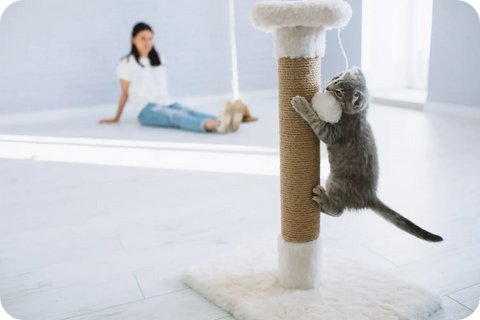


























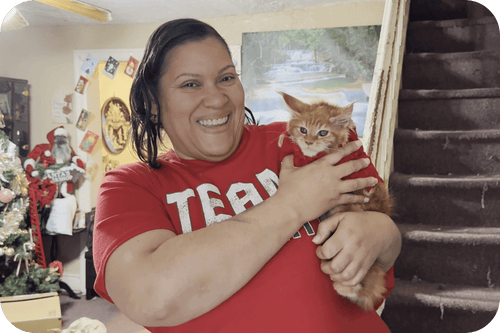
























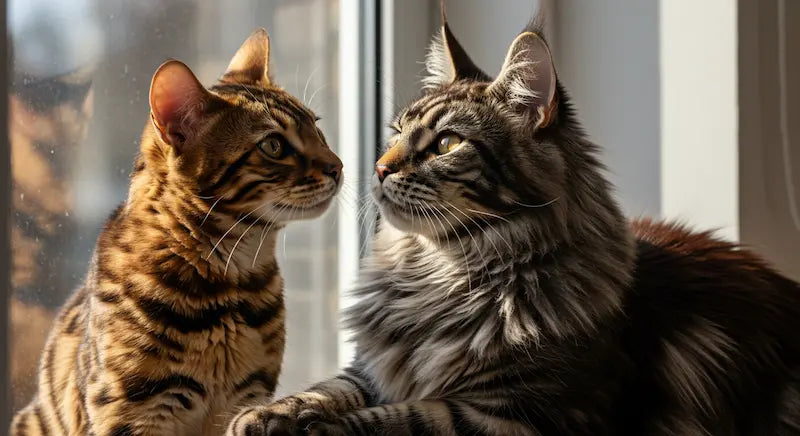
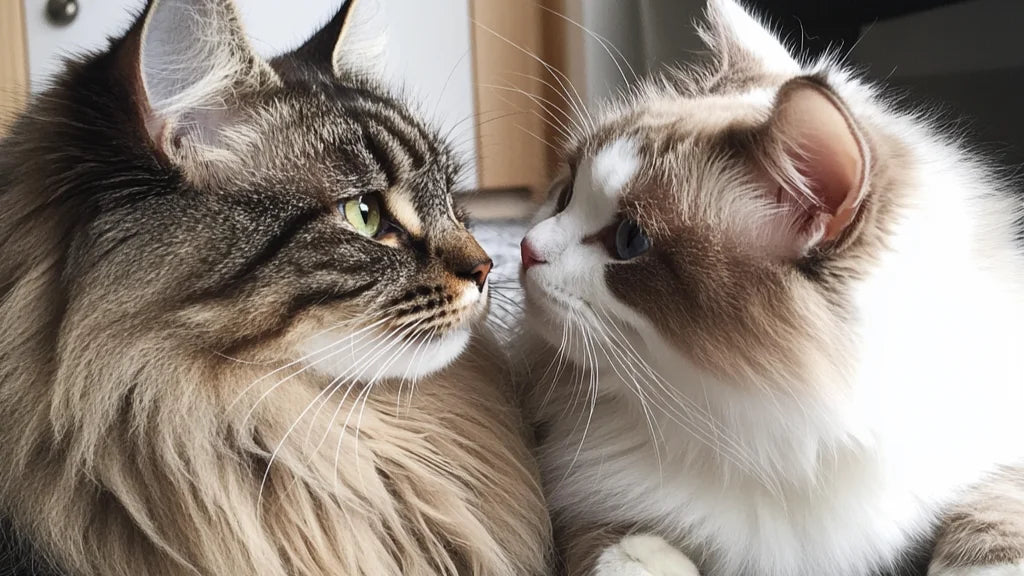







Comments(0)